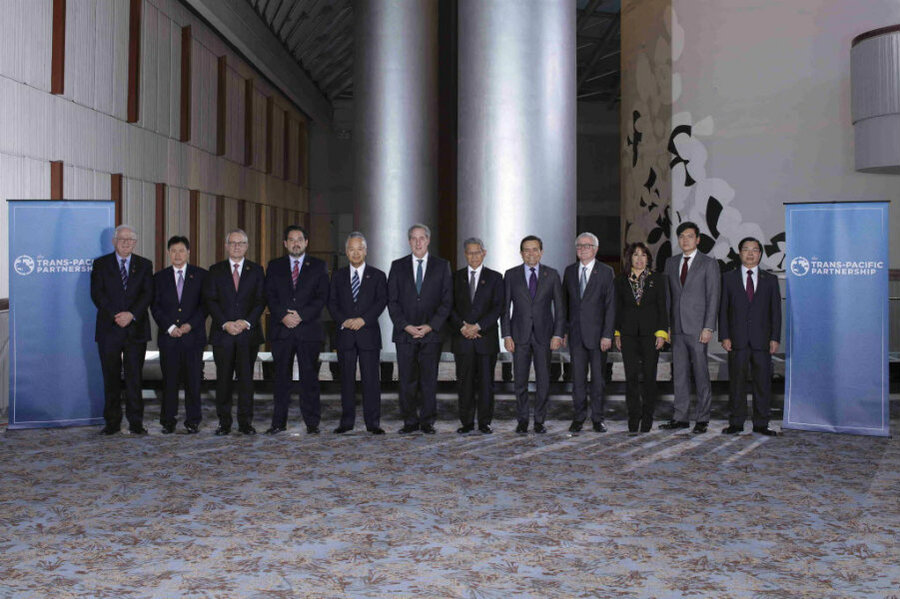Trans-Pacific Partnership deal takes shape: What are major sticking points?
Loading...
The United States and 11 Pacific Rim nations have agreed to a sweeping regional trade accord that would cut barriers to goods and services and set standards for 40 percent of the world’s economy.
The Trans-Pacific Partnership has yet to be ratified by Congress and lawmakers in the other countries involved. But the deal – the result of nearly eight years of negotiations – could be a defining achievement for President Obama and “the capstone for his foreign policy ‘pivot’ toward closer relations with fast-growing eastern Asia, after years of American preoccupation with the Middle East and North Africa,” The New York Times reported.
The accord, set to be announced later Monday, could also reshape industries and influence everything from the price of cheese to the rules of automobile assembly. The deal would phase out tens of thousands of tariffs and other barriers to international trade, establish uniform rules on corporations’ intellectual property, open the Internet even in communist Vietnam, and crack down on wildlife trafficking and environmental abuses, according to the Times.
The final round of talks in Atlanta, which began on Wednesday, centered on a number of issues, including protections for dairy farmers and rules governing the auto trade that dictate how much of a vehicle must be made within the TPP region in order to qualify for duty-free status.
One major snag in negotiations was the minimum period of protection to the rights for data used to make biologic drugs, which are medicines made from live organisms.
The US had sought 12 years of protection to encourage pharmaceutical companies to invest in expensive biological treatments, while Australia, New Zealand, and public health groups had sought a period of five years to bring down drug costs and reduce the burden on state-subsidized medical programs. US negotiators eventually conceded to minimum terms of about five to eight years – something that the generic drug industry, nonprofit health groups, and most of the other TPP countries insisted was a necessary incentive for innovation.
The Biotechnology Industry Association in Washington, D.C., however, said it was "very disappointed" in the compromise. "We will carefully review the entire TPP agreement once the text is released by the ministers," the industry lobby said in a statement.
The TPP is expected to face stiff opposition from US presidential candidates Donald Trump and Bernie Sanders. Both condemned the deal long before any agreement was reached, while Democratic frontrunner Hillary Clinton has expressed wariness of the accord.
As The Wall Street Journal put it, “legislation designed to expedite passage of the agreement through Congress passed narrowly this summer, and a variety of factors, including the presidential campaign, could make the final deal a hard sell.”
This report contains material from the Associated Press.








